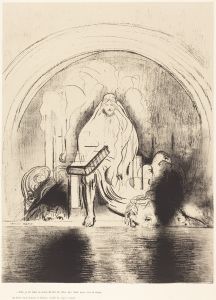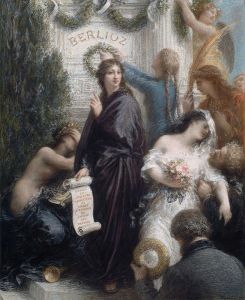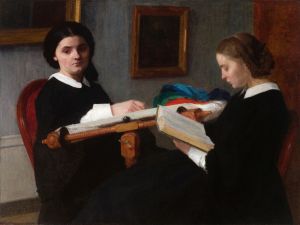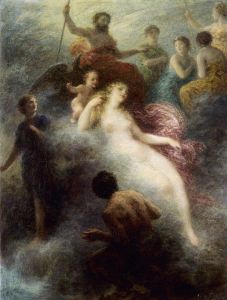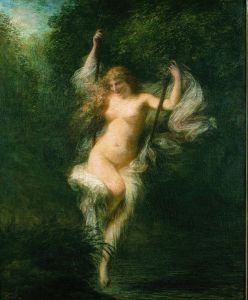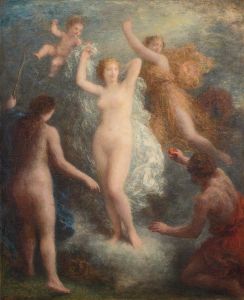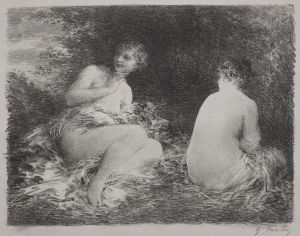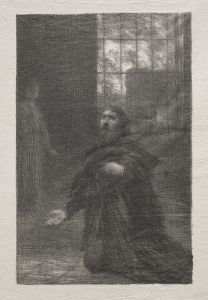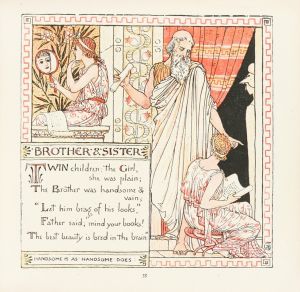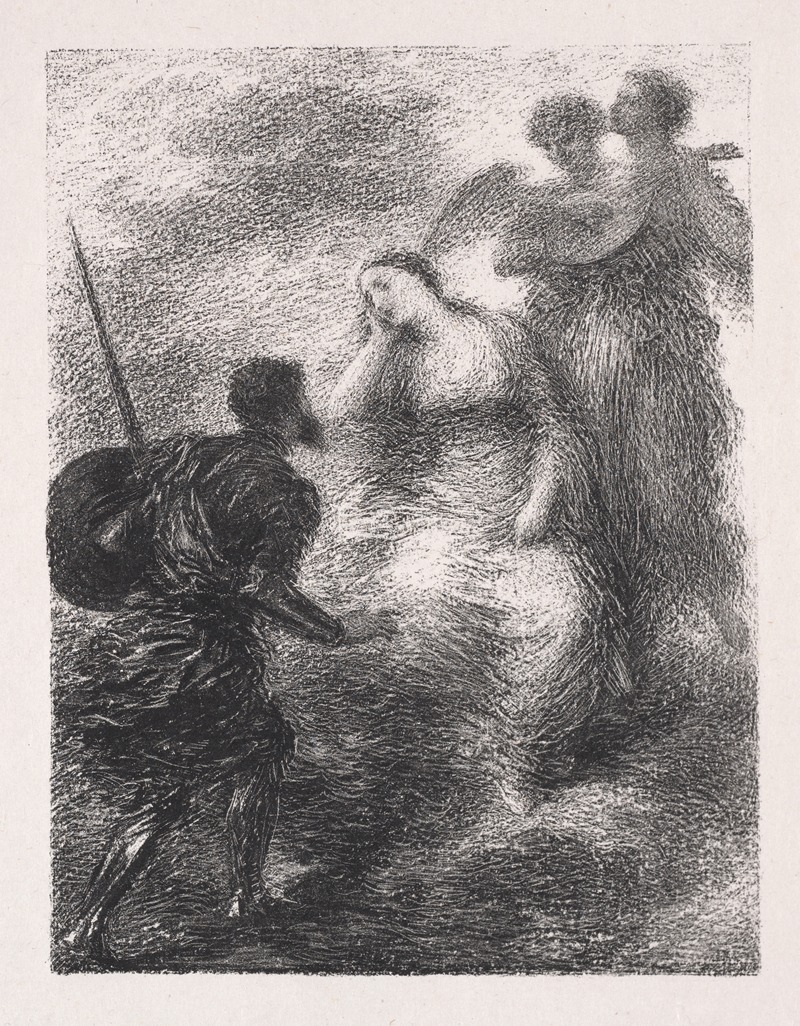
Vision
A hand-painted replica of Henri Fantin-Latour’s masterpiece Vision, meticulously crafted by professional artists to capture the true essence of the original. Each piece is created with museum-quality canvas and rare mineral pigments, carefully painted by experienced artists with delicate brushstrokes and rich, layered colors to perfectly recreate the texture of the original artwork. Unlike machine-printed reproductions, this hand-painted version brings the painting to life, infused with the artist’s emotions and skill in every stroke. Whether for personal collection or home decoration, it instantly elevates the artistic atmosphere of any space.
Henri Fantin-Latour, a renowned French painter and lithographer, is celebrated for his exquisite still lifes and group portraits of Parisian artists and writers. Among his diverse body of work is the painting titled "Vision," completed in 1883. This piece is a testament to Fantin-Latour's interest in symbolism and his ability to blend reality with the ethereal.
"Vision" is an oil painting that exemplifies Fantin-Latour's departure from his more traditional still life compositions. Instead, this work delves into the realm of the fantastical, reflecting the artist's fascination with music and dreams. The painting features a dreamlike scene, where figures appear to be enveloped in a mystical atmosphere, suggesting a narrative that transcends the ordinary.
Fantin-Latour was known for his connections with the Symbolist movement, and "Vision" is often seen as an embodiment of this artistic trend. Symbolism, which emerged in the late 19th century, sought to express ideas and emotions through symbolic imagery and themes, often delving into the mystical and the abstract. In "Vision," Fantin-Latour employs a soft, almost ethereal palette, with gentle transitions between light and shadow, creating an otherworldly ambiance that invites viewers to ponder the deeper meanings behind the imagery.
The composition of "Vision" is marked by its fluidity and the harmonious arrangement of figures and forms. Fantin-Latour's skillful use of light and color enhances the dreamlike quality of the painting, drawing the viewer into a contemplative state. The figures in the painting, though not explicitly identified, seem to be engaged in a silent interaction, their expressions and gestures hinting at a narrative that is open to interpretation.
Fantin-Latour's interest in music is also evident in "Vision." He was known to be an admirer of composers such as Wagner and Berlioz, and his paintings often reflect the influence of musical compositions. In "Vision," the arrangement of figures and the rhythmic flow of the composition can be likened to a musical piece, where each element contributes to the overall harmony of the work.
The painting is housed in the Musée d'Orsay in Paris, which is home to many of Fantin-Latour's works. The museum's collection provides insight into the artist's evolution and his contributions to the art world during a period of significant change and experimentation.
Henri Fantin-Latour's "Vision" remains a captivating example of his ability to merge the tangible with the intangible, inviting viewers to explore the boundaries between reality and imagination. The painting continues to be appreciated for its aesthetic beauty and its capacity to evoke a sense of wonder and introspection, characteristic of the Symbolist movement. Through "Vision," Fantin-Latour offers a glimpse into a world where art, music, and dreams converge, leaving a lasting impression on those who encounter it.








